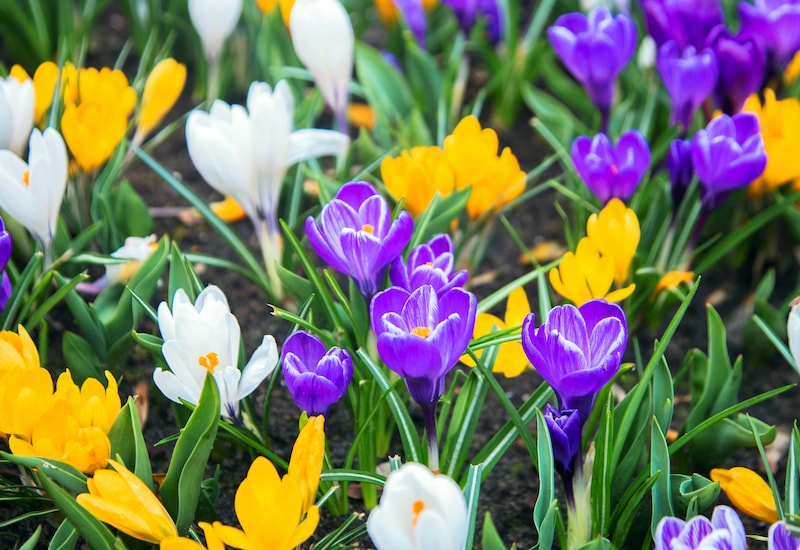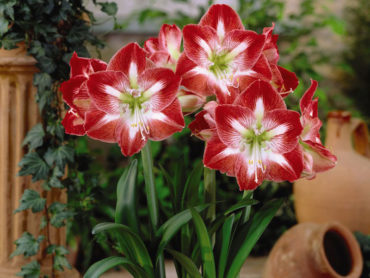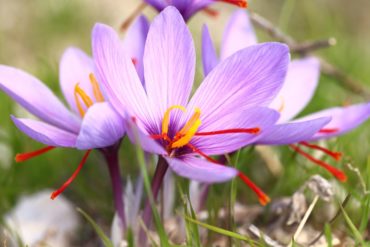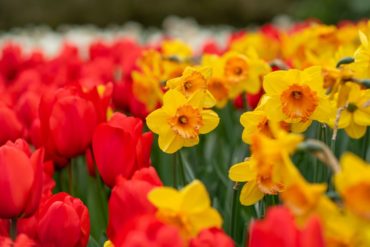Spring-flowering crocus bulbs can be grown in patio containers, borders, rockeries and lawns. One of the earliest blooms to appear in your garden, these special flowers emerge in a kaleidoscope of white, yellow, purple and orange just when you need them most. To help fill your garden with colour, we asked our favourite gardening bloggers to share their crocus tips. Here’s what they said…
Browse our full range of crocus bulbs for more inspiration.
Contents:
- Best advice on where to plant spring-flowering crocus bulbs
- Best advice on how to plant spring-flowering crocus bulbs
- Best advice on growing and caring for crocuses
- Best advice on growing autumn-flowering saffron crocuses
Best advice on where to plant spring-flowering crocus bulbs
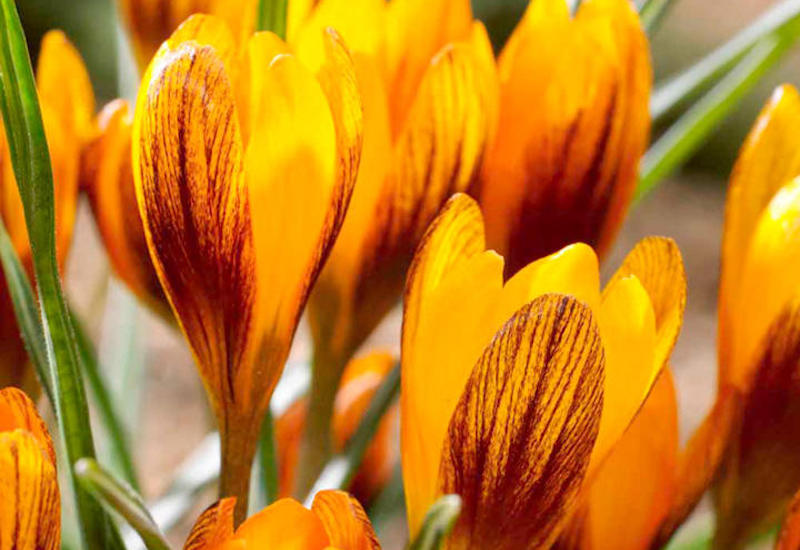
The vibrant ‘Orange Monarch’ can be planted in lawns, borders or patio containers
Image: Crocus olivieri subsp. balansae ‘Orange Monarch’ from Suttons/©Visions BV, Netherlands
Henry, the professional garden designer behind @henryaggdesign grows stunning crocus ‘Orange Monarch’ in large terracotta pots. He fills his containers with crocuses, wallflowers and other spring bulbs to launch his garden into spring! Follow this plantsman on Insta for more growing and hard-landscaping advice.
When the family behind @grow_me_a_garden moved house, they wanted to be sure they’d have a good show of spring colour in their new front garden. Starting in October, they worked hard to plant 150 crocus bulbs in a sunny border along the front of a hedge. Despite being a little more difficult than they’d first imagined, check out their follow up post to see if the effort was worth it…
If you love crocuses as much as Ramona from @monalogue, a crocus lawn might be the way to go. Her Somerset cottage garden contains several varieties including the larger Dutch cultivars that rise through the long winter grass when they emerge in February. She planted about 100 bulbs per square metre to get this magical effect. Watch her full video for more tips.
And if you want to be inspired by a truly “jaw-dropping” display of Crocus tommasinianus, take a look at this photo shared by Britain’s best garden photographer, @clivenichols. Taken at Little Court Garden in Hampshire, it shows how the crocuses have spread to form a breathtaking “jewelled carpet” of colour. Clive says that this spring bulb display “is up there with the best I have ever seen!”
Best advice on how to plant spring-flowering crocus bulbs
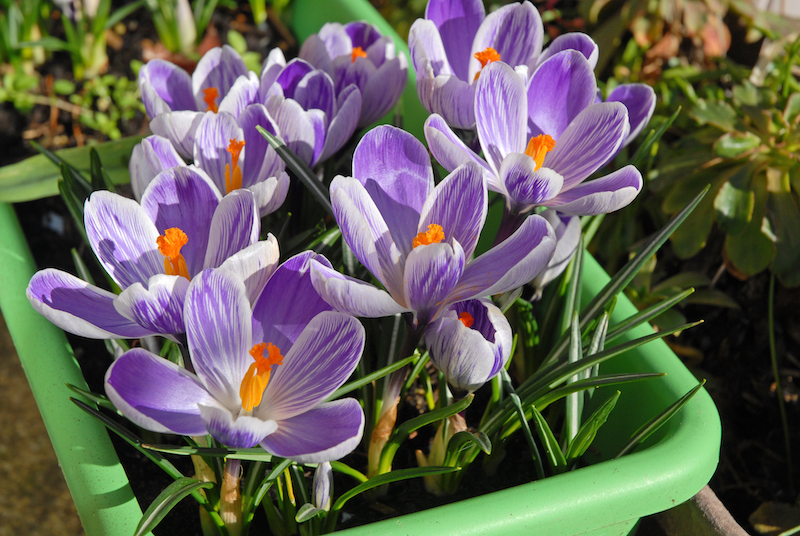
Plant crocus bulbs in containers or the ground
Image: Crocus ‘Pickwick’ from Suttons
Not sure how to plant your crocus bulbs? Pete from Real Men Sow recommends burying the corms at “a depth of three times their own size” in moist but free-draining soil. It doesn’t matter where you choose, provided they’re in full sun. Just “make sure you plant your crocus corms with the pointed tip facing upwards,” he says.
Crocuses look best planted in small groups, and the photos at @dawns_gardening are the perfect example. Not only are Dawn’s Crocus tommasinianus looking fabulous, but she says “they’re gradually spreading well too.” Dawn is so happy with her blooms that she’s set a reminder to buy and plant lots more bulbs this autumn so she can have them everywhere next spring!
Crocus tommasinianus “is a resilient little plant and copes well in quite tough surroundings,” according to the Instagram post shared by @the3growbags. Taken from Louise Sims’ new gardening book, the corms in the image manage well in dappled shade “but full sun will bring out the best.” If you’re looking for an easy-to-care-for spring bulb to naturalise in your garden, this is the one to choose.
Over at Wild Your Garden, Joel waits until spring and plants crocuses ‘in the green’ with his children. ‘In the green’ means that bulbs are just sprouting, so they can already see the purple, white and orange flowers that are about to open. Joel recommends planting them at about 3-4 inches deep and gets his kids to firm them in well. Watch this short video for inspiration on how to get the whole family involved in planting flowers to support bees.
Best advice on growing and caring for crocuses
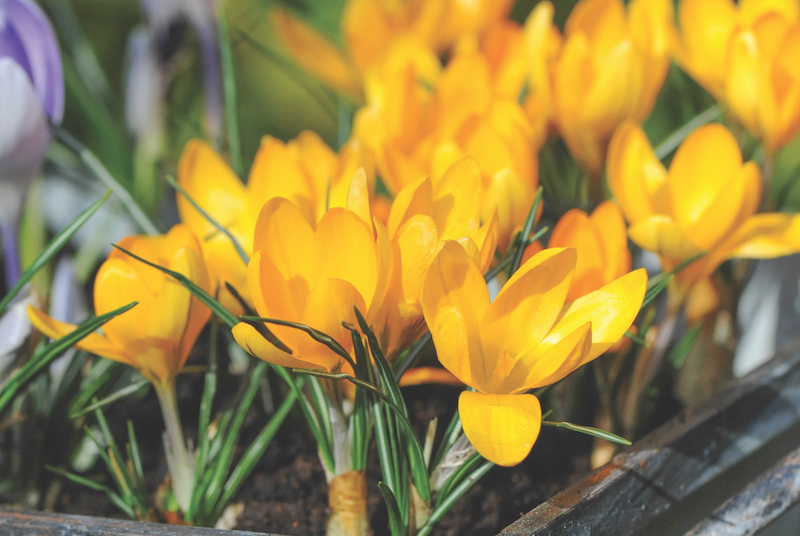
These large and dramatic yellow crocuses flower from late February
Image: Crocus ‘Yellow Mammoth’ from Suttons
Once your crocuses have finished flowering, Hannah Miller from DIY Gardening recommends leaving the foliage in place “so the plant can transfer energy to the bulb for next year’s growth.” If you’re growing them in your lawn, wait until the leaves have faded and discoloured before mowing them down. Want to lift and divide clumps of naturalised crocuses? Simply “split them in the spring after flowering.”
Most people plant corms, but according to Simon from The Garden of Eaden, you can also propagate your own crocuses from collected seed. He says you should collect the seed from the “swollen sheaths close to the ground” as soon as it ripens in May or June. “It will take a few years before your new plants come into flower,” explains Simon, but it’s a good way to save money if you want a meadow of spring blooms. Read his full article for germination tips.
Did you know you can grow crocuses indoors? Over at Snapdragon Life, Jane demonstrates how to make a jam jar terrarium filled with tiny crocus bulbs. She waits until the beginning of spring to collect together her large jar and other materials. A thin layer of grit at the bottom of the jar prevents the bulbs from sitting in too much water and moss from her lawn brings the arrangement to life. Once they’re finished flowering, Jane plants her crocuses out in the garden for future years.
Best advice on growing autumn-flowering saffron crocuses
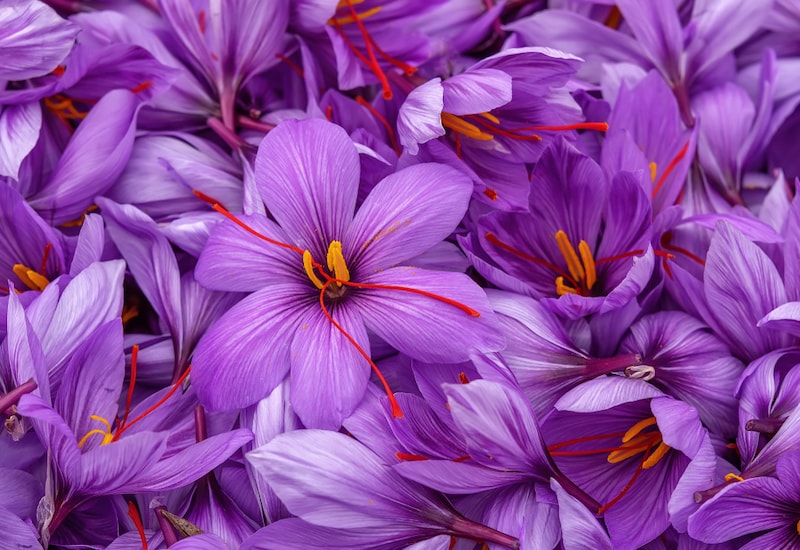
Saffron crocus flowers provide a stunning autumn display and iconic scent
Image: Crocus sativus (Saffron crocus) from Suttons
Unlike a spring-flowering bulb, crocus sativus (or saffron crocus) is an autumn flowering bulb. These bulbs are planted from August to September and the flowers emerge in October to November of the same year. In our comprehensive saffron crocus growing guide, the Suttons team recommends planting the corms 10-15cm deep and 10-15cm apart. While the flowers are a welcome sight as winter approaches, it’s the three, vibrant orange filaments that are the real prize. One of the most expensive spices in the world, you can harvest these precious strands to flavour your cooking. (Please be aware that only saffron crocus is edible. All other crocus varieties are toxic).
“Did you know you can grow your own saffron starting now?” asks garden writer and veg grower Rob Smith from @robsallotment. He plants his saffron crocus bulbs in September and explains that the trick is to “keep them evenly moist as they grow within a couple of months.” Rob uses tweezers to pluck out the red-orange threads when the flowers bloom in late autumn. To make a tiny amount go further, he suggests steeping your saffron in oil “to make a sumptuous condiment to drizzle on seafood or roasted veg.”
After flowering in autumn, the saffron crocus leaves remain green through the winter, supplying food to the corm until they die back in May, explains Jeremy at his Let It Grow blog. He says, “I recommend growing the plant for its beautiful blooms as much as the edible saffron threads. Late season bees and hoverflies seem to like them too: the aroma of fresh flowers in the sunshine is very noticeable even to the human nose.”
We hope this has given you plenty of ideas about how, when and where to plant crocus bulbs this autumn. Try mixing them with a variety of other spring-flowering bulbs for a breathtaking start to the season. Want to try something a bit different? Read our guide to forcing bulbs indoors for a special display.
Lead image: Crocus ‘Botanical Mixed’ from Suttons
Last Updated on December 3, 2025 by Suttons Horticultural Team

